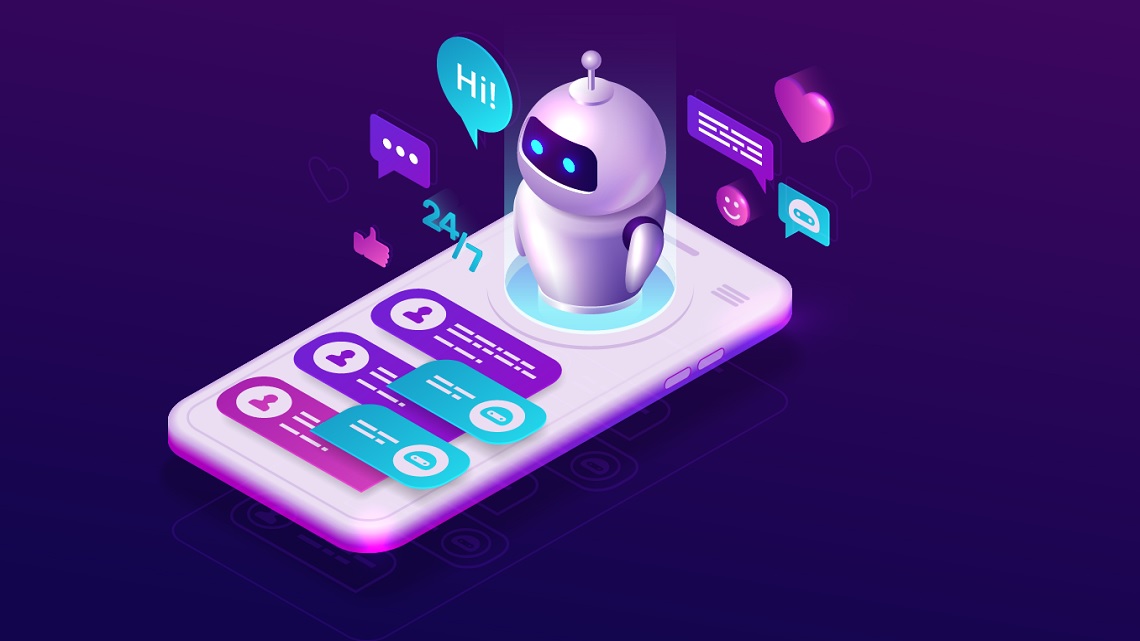Despite what may seem like a sudden appearance on the tech scene, chatbots are nothing new. The first chatbot, ELIZA, was created in 1966 by Joseph Weizenbaum in an effort to pass Alan Turing’s famous “Turing Test.” Although ELIZA didn’t quite manage to pass the test, she was just the first of many. The first chatbot to gain true mainstream popularity was most likely A.L.I.C.E., who came online in 1995 and managed to fool many a human into thinking A.L.I.C.E. was a real person.
Today, chatbots are practically everywhere — Siri, Google Now, Alexa, and Cortana are most likely on one or more of your devices as we speak, and they’re more sophisticated than they’ve ever been. Chatbot technology is always evolving and progressing, and it may not be long before they’re indistinguishable from living people.
Today, chatbots are powered by AI and machine learning, and businesses everywhere are adopting them for a wide variety of uses, mostly in the area of customer service. And they tend to be a popular choice, too — statistics show over 60% of customers prefer using a customer service chatbot over waiting for a human agent on the phone, and almost 75% of users prefer using chatbots when seeking out answers to minor or simple questions.
But what kind of things can a chatbot do aside from answer simple customer service question? Quite a lot, as it turns out. Here are some specific ways businesses are using chatbots to transform and improve their operations as we head into 2023.
Table of Contents
1. Using Internal Chatbots to Streamline Workflow Processes
Not every chatbot solution has to be customer-facing. Chatbots can be immensely useful when it comes to streamlining internal processes. For example, chatbots can streamline HR support with integration to a knowledge base and let employees ask and get answers to menial questions without having to take up the time of a human person. They can also be used to facilitate the onboarding of new employees (again, freeing up time for flesh-and-blood employees) and helping with day-to-day tasks like scheduling meetings across multiple calendars, submitting hours for payroll, making requests for sick leave or paid time off, and more.
2. Enabling Chatbots to Facilitate Payments
Online payments account for a massive amount of revenue — over 12 billion by the end of 2025. Many customers prefer online payments to writing checks and sending snail mail, and the demand for mobile payments is skyrocketing. In short, online payments are convenient, save time, ignore geographical boundaries, and add a measure of safety that “offline” payments don’t always offer.
So where do chatbots come in? Chatbots can make it much easier to facilitate online payments, especially for those not as skilled with technology. A chatbot can provide a friendly, conversational interface that lets users submit payments or manage bills with a few keystrokes instead of waiting on the phone to speak to an agent. Chatbots also tend to be much more error-free and reliable than their more fallible human counterparts.
3. Creating Smarter AI Chatbots to Deliver Personalized Insights
With the advent of machine learning and advanced artificial intelligence, chatbots are able to collect (and make use of) customer data in a way human agents would have a lot of difficulty managing. AI chatbots can use their data interpretation abilities to predict customer behavior, anticipate customer needs, and deliver personalized insights such as search results, product recommendation, and so on. Online chatbots can even be used to upsell or cross-sell goods or services to customers based on their preferences.
4. Implementing Voice-enabled Chatbots
While text-based chatbot software is already familiar to many users when visiting a company’s website, people have grown more and more comfortable with voice assistants such as Alexa and Siri. Voice-enabled chatbots are starting to enter wider use in the business world, and will make it even easier for customers to engage with a company while driving, cooking, or whatever else, without having to stop and type. This will be particularly useful to users with disabilities, who might find making a voice request much easier than typing something out on a web or mobile app interface.
5. Using Chatbots to re-engage the Customer
The usefulness of chatbots doesn’t have to end when a sale is made or a support question answered. The trend of using chatbots in retention and retargeting campaigns is gaining traction with many businesses. Chatbots can automate the process of after-sales support by re-engaging the customers through things like promoting loyalty programs, reaching out to customers who have made purchases in the past, and otherwise reconnecting with the customer. This is where the personalization capabilities of AI chatbots provides a huge advantage — chatbots can use specific and relevant customer data to offer a more personal touch when recommending new products or re-engaging with a customer — without increasing the need for manpower.
